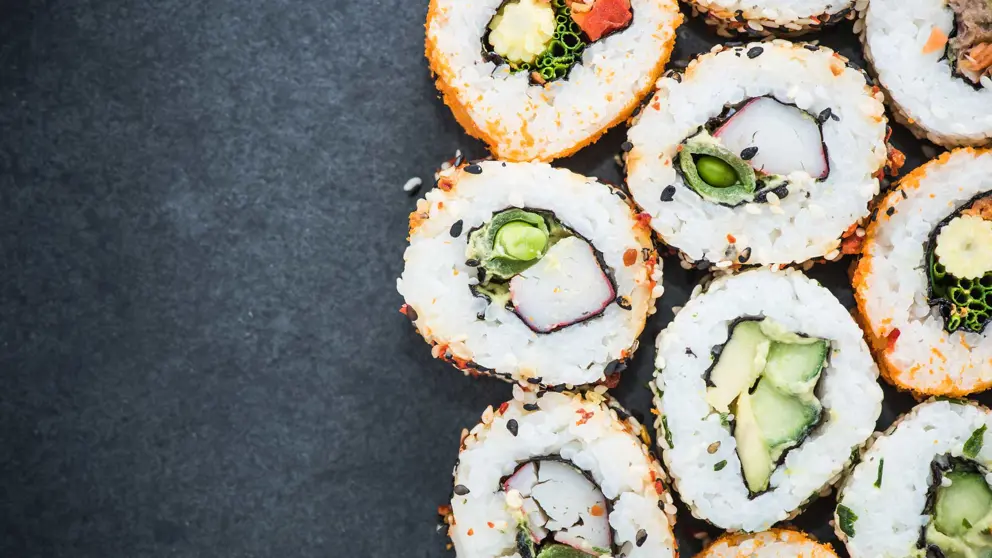Few people would dispute that broccoli is more nutritious than gummy bears, but there are many foods that fall into a grey zone. Some have a “health halo” — they seem to be nutritious, but a closer look at the ingredients and Nutrition Facts panel can reveal a different story. Here are 10 foods that sound healthy, but may not be.
1. Sweetened yogurt
The average cup of flavoured yogurt has 30 grams of sugar (7.5 teaspoons) — that’s as much as a chocolate bar! Some sugar occurs naturally in the yogurt, but most is added. Instead: Cut the sugar by making your own blend. Start with plain Greek yogurt and add fresh fruit.
2. Bran muffins
They sound healthy because of the word bran, right? Reality check: the average donut shop bran muffin has almost 400 calories and a whopping 36 grams (9 teaspoons) of sugar — but only 4 grams of fibre. Instead: Make your own small muffins and freeze them for grab-and-go mornings.
3. Sushi
The fish is great, but when you’re mostly eating white rice and dipping it in soy sauce, you’re getting lots of refined carbohydrates and sodium. Instead: Opt for more fish (sashimi), less white rice (or choose brown rice if it’s an option), and some vegetables on the side. Use soy sauce sparingly, and add flavour with wasabi.
4. Gummy fruit snacks
Any time “fruit juice concentrate” appears on the ingredient list, translate it to mean sugar. Isolating the sugar from fruit to make processed fruit-flavoured gummies is not the same as eating nutrient-rich, fibre-filled, fresh fruit. Opt for real fresh fruit instead.
5. Hazelnut-chocolate spread
The health halo is about milk, cocoa and hazelnuts, but the ingredient list tells a different story: sugar and palm oil are the main ingredients, and neither is nutritious. If you compare a hazelnut-chocolate spread to chocolate frosting, you will see the same amounts of sugar and fat. Instead: Stick with peanut or almond butter.
6. Veggie sticks
I don’t mean carrots and celery! I’m talking about those bags of fried or baked snacks — crunchy sticks made from corn flour and potato starch with a dusting of spinach or beet powder for colour. Yeah, those don’t count as vegetables. Instead: Try a platter of real vegetable sticks — cucumbers, peppers and carrots.
7. Water with vitamins
Water is essential to life, and so are vitamins. But when the two are combined in a bottle with food colouring and sugar, an unnecessary product is created. Instead: Drink plain water or jazz it up with citrus or mint. You get all the vitamins you need from food, or you can take a multivitamin when indicated (they have no sugar!).
8. Sweetened oatmeal
Oats are a nutritious whole grain, but not when your morning bowl is coated in three teaspoons of sugar. Skip the maple or brown sugar flavour packets. Instead: Make your own plain oatmeal with grated apple, coconut, mashed banana or fresh berries.
9. Granola bars
Often touted for their whole grain goodness, most granola bars are sticky-sweet junk food in disguise. Don’t let a few oats fool you — especially when you also see marshmallows and chocolate chips. Instead: If granola bars are a must-have, choose one with 6 grams of sugar or less per bar, and hopefully some fibre.
10. Pretzels
In the low-fat era, pretzels were the king of snack foods. But now we know that their refined flour and salt are just as detrimental to heart health as fatty foods, so pretzels have been reclassified to junk food. Instead: Crunch on air-popped popcorn.
None of these foods are off-limits, but it’s important to know the honest truth behind what you’re eating. Consider the 80:20 rule: If you eat well 80% per cent of the time, it’s alright to choose some of these indulgent foods 20% of the time.
- Learn more about healthy eating to reduce your risk of heart disease and stroke.
Join our groups
